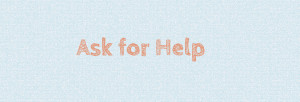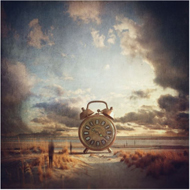WINNER of the ROAD TRIP book contest is DEBBY DODDS (how in the world could I resist a book about John Waters hitchhiking?).
~ ~ ~
The first Road Trip Book Tour post was more about the Road Trip, this post is more about the Book Tour itself. Even if you never plan to go on a book tour in your life, the information may be helpful in other ways.
I’ve been book touring for six years. And for many years before I started, I led workshops in schools, conferences, and festivals, performed live spokenword, and produced literary arts events. I was used to organizing events, traveling around, and speaking in front of others. But doing these things may scare the pants off of you.
It doesn’t have to.
My tours are set up in collaboration with my publisher in terms of ordering and shipping books, but I arrange almost all the events myself. And the truth of the matter is I prefer it this way.
I’m the one who can “sell” myself best. I’m the one who knows what kind of programming I can deliver. I can answer any questions and share my enthusiasm for what I do. It is in my best interest to speak to the venues myself.
Calling prospective venues or speaking to someone in person has a much higher success rate than simply sending cold emails.
Tip #1 – give your event booking the personal touch. Make connections
WHY GO ON A TOUR?
In this age of information overload, it’s challenging for a new author to be heard. I believe that the old fashioned way of meeting people is the best: face to face. When we feel connected to someone, we are more invested in them. I think you have a much greater impact when you show up and share yourself with others.
Setting up an indie tour is not easy. It takes tenacity, creativity, and patience. That’s why I also advise you make your tour fun. *See someone you haven’t seen in a while. Take a side trip. On this year’s tour I’m meeting my 2-year-old niece for the first time and spending a weekend with five women I’ve known for 40 years (hilarity ensues!).

Here are some other tips from my The Authorpreneurial Booktour workshop:
- Assess your talents, knowledge, experience, and expertise
- Think about who you know
- Think outside the (bookstore) box
- Keep trying (persistence pays)
ASSESS YOUR TALENTS, KNOWLEDGE,
EXPERIENCE, and EXPERTISE
How comfortable would you be performing in front of 300 elementary students? My response is, Bring It On! But many people would run screaming in the opposite direction.
If you are uncomfortable speaking to large groups of people, then don’t. Find a more comfortable number and go from there. After a few small author events, challenge yourself with larger and larger audiences.
Start small. Develop one talk/presentation and one workshop. Create a program around what you already know. Everyone has something to share and teach. Do you play an instrument? I had an introverted YA fantasy writer in one of my workshops who played the harp! I suggested she bring her harp into the schools and teach the students how to write fantasy ballads.
Does your book feature origami? Skateboarding? Juggling? Ballroom dancing? I know an author who learned how to escape a straight jacket for one of his presentations. How does what you already know relate to your book? Offer a talk or workshop around a niche topic that will help you stand out.
How might your life experiences dove tail into a book tour? I love to perform, so I wrote a bunch of songs around my stories. And that’s how I entertain 300 elementary school kids.
WHO DO YOU KNOW?
Where should you go on tour? I start with places where I know people. I sofa-surf a lot when I tour. Not only do I get to visit with people I haven’t seen for a while (see *why go on tour), friends have kids or friends or friends with kids. This helps build an audience. Friends know the area and can connect you with others.
Don’t be afraid to ask for help. Friends and family want to help you. And it’s easier to book something when you’ve been referred by someone else.
Do be sure not to expect your friends to wait on you or attend all your events, though. Be gracious and kind (and bring bottles of wine).
THINK OUTSIDE THE (bookstore) BOX
I hate to be the disturber of debut author dreams, but bookstore readings are not the be-all and end-all of the book tour. Unless you’re reading in your hometown or someplace you already have a fan base, you might find yourself reading for 2 people. Think about it – – how many times have you been to a book store reading for an author you’d never heard of?
I can say from experience, it’s a bit humbling.
If you REALLY insist on setting up bookstore readings out of town, two things that have helped me to get an audience are: 1) Pair up with a local author or two for a joint reading/launch or 2) do some other local events prior to the reading to generate interest.
Better than bookstore readings, where your audience members might have to drive across town in traffic after work just to see you, think of places to visit where your audience is built in: schools (from elementary to university), book clubs, book fairs, conferences, festivals, etc.
I like to book tours around “anchor gigs.” These are gigs organized by someone else with inflexible schedules (like conferences or festivals or literary center events). Once I’ve decided where my anchor gig is, I make a contact list for all the schools in the area and start calling. I also search for any literary or youth centers. Then, only when I’ve got a few gigs in place, do I find an indie bookstore.
For instance, on my first tour I started at a book fair and conference. I purchased a book booth at the fair and taught two workshops at the conference. I then booked two gigs in an after school arts program, four in elementary schools, and one bookstore. The bookstore was small, which made it feel “packed” with 22 people. The bookstore reading came AFTER most of the events, allowing people to get to know me in a town where they hadn’t before.
I have led workshops, performed, and given talks in cabins, in the forest, at parent-child book groups, at schools, libraries, festivals, conferences, youth centers, art centers, detention centers, late-night programs, cafés, wineries, churches, and living rooms.
TENACITY TENACITY TENACITY
On my first tour, I made 47 cold calls in order to book 9 gigs. And I didn’t just call once and leave it at that. People are busy. I called, sent a follow up email, and called again. If that didn’t pique any interest, I moved on.
Have patience. Gigs will fall through. Keep at it. I literally just added an event TODAY for next week. Promote like the wind. Make a facebook page, announce gigs (even the private ones, so people know where you’ll be) through social media, tell the papers, offer interviews, ask if the venue has a newsletter, distribute flyers, email friends with said flyers.
And again… be gracious and kind.
If your first event flops: analyze, adjust, and try again. Before you know it you’ll have a file full of talks, workshops, and contacts and calendar full of bookings. It’s taken me years to figure out the best venues for my work and style, the most effective approaches for booking gigs, and the most successful curriculum for my readers.
~ ~ ~
YOUR WORKOUT
If you don’t put your characters into situations that push their comfort zones, you’re missing an important element of fiction writing: tension. You’re also missing out on an opportunity for them to grow. You know the cliché saying “No pain, no gain”? Well, it’s pretty much true.
TIMED WRITING GUIDELINES
Set your timer for 5 -10 minutes per start line
(I increase the time with each start line: 5 min, 7 min, 10 min …)
When timer starts: write, don’t stop, don’t edit, don’t cross out.
What my character avoids doing more than anything is . . .
My character freezes up when . . .
My character faces his/her fear when . . .
On the other side of this fear, my character discovers . . .
Happy writing!
~ ~ ~






